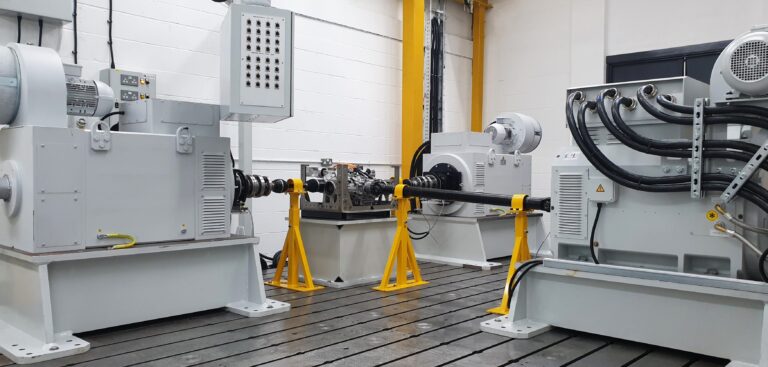Powertrain engineering consultancy Drive System Design (DSD) has announced the expansion of its test facilities to meet the needs of commercial vehicle manufacturers and suppliers designing solutions for powertrain electrification. The expansion adds two test cells for high-performance hybrid axles and e-machines and comes as demand for the testing of commercial electric powertrains grows.
The first cell includes equipment capable of delivering input torque of up to 2,500Nm and power up to 525kW, alongside 350kW and 1,100V of battery emulation. The second cell can accommodate EV powertrains with up to 350kW of power. The upgrades will complement DSD’s existing test facilities, including a 450kW highly transient ETPS (engine torque pulse simulator) for hybrid powertrains, and three other battery emulators.
“As global pressure grows to reduce transport’s contribution to climate change, commercial vehicle manufacturers are turning to electrification in the same way as passenger car manufacturers,” explains David Kelly, director, Drive System Design. “This has resulted in a significant increase in worldwide demand, not only for design and development work but also for outsourced validation testing. These additional facilities have extended our ability to provide this for a wide range of hybrid and electric powertrains, and have been configured with sufficient torque capacity to accommodate most commercial vehicles below class 8.”
Testing at DSD’s facilities extends beyond routine durability and validation, and tests on transmission control systems and shift comfort development can be conducted. With electric powertrains still a relatively new idea for the commercial sector, some organizations require external knowledge and expertise, and work must be outsourced to companies such as DSD.
“The duty cycles appropriate for electrified CV powertrains are very different to those for passenger cars, so we are providing engineering support to customers moving into this sector for the first time,” says Kelly. “On the other hand, even customers with long experience in CVs are being surprised by the speed with which the market is changing and are struggling to accommodate the upsurge in test requirements using solely in-house facilities.”
DSD says it is continuing to develop its automation capabilities within the new facility to speed up testing programs, particularly for electrified systems in hot and cold environments. Kelly explains that some tests that previously took six weeks to complete, will now be finished in half the time with suitably configured automatic control.
The company is also equipped to carry out powertrain and driveline simulation. With the growing diversity and complexity of propulsion systems, traditional forms of testing and validation often don’t meet new vehicle program targets. Thus, Kelly explains that DSD often uses a combination: “Simulation and physical testing are complementary and highly effective when used together. For example, traditional test point-based cycles often don’t accurately represent the real world, but using fast, real-time rig-in-the-loop (RIL) simulation subjects the system to much more realistic testing. It also allows the interaction between hardware and software to be more thoroughly validated early in the program, resulting in a more mature solution before investing in prototype vehicles.”


